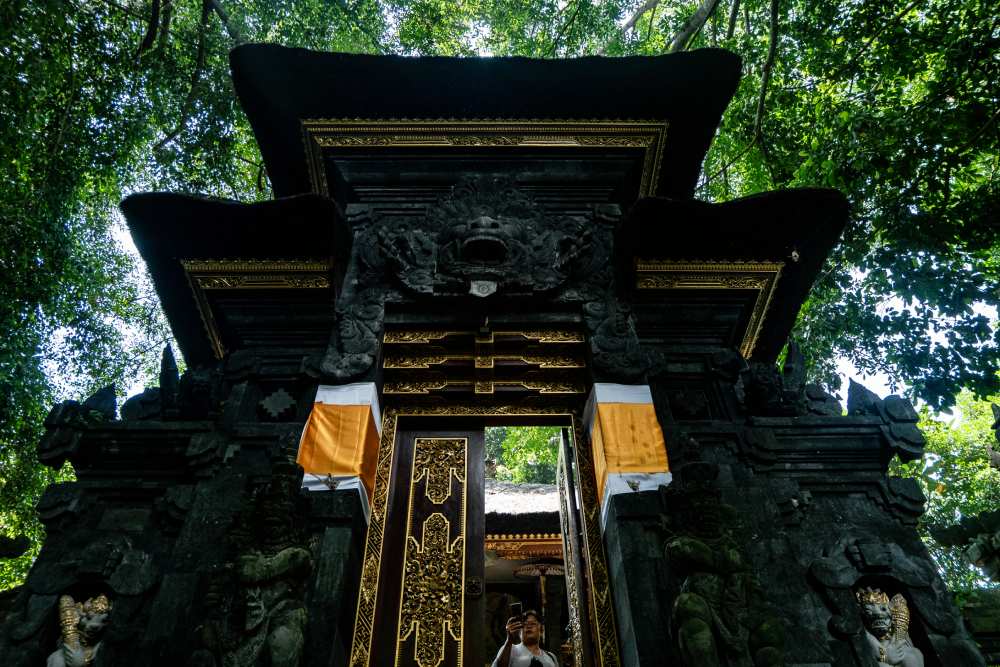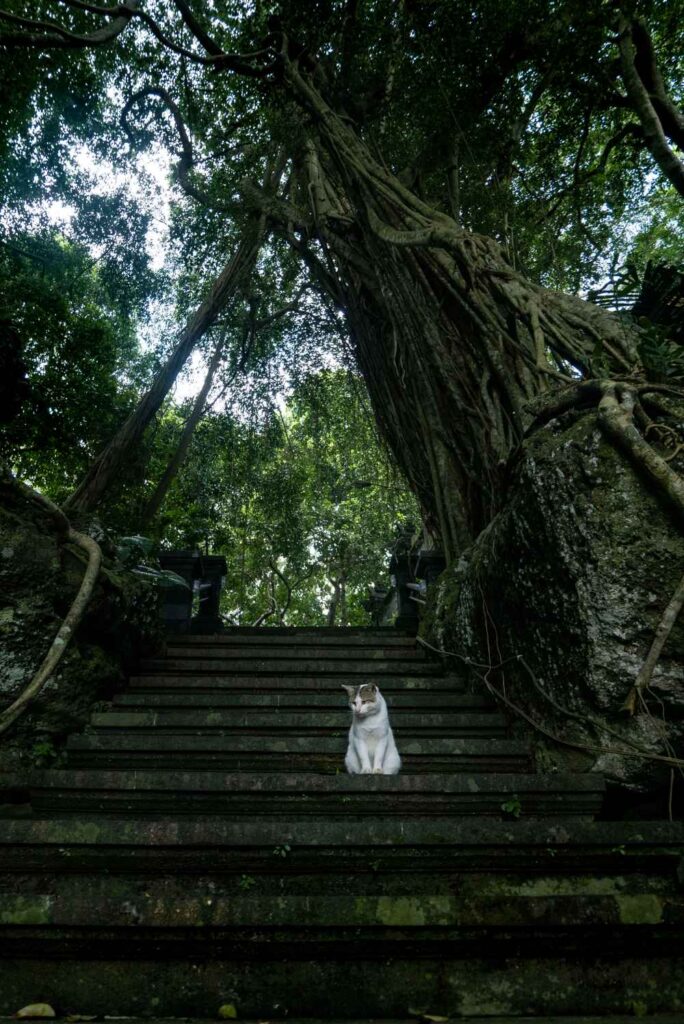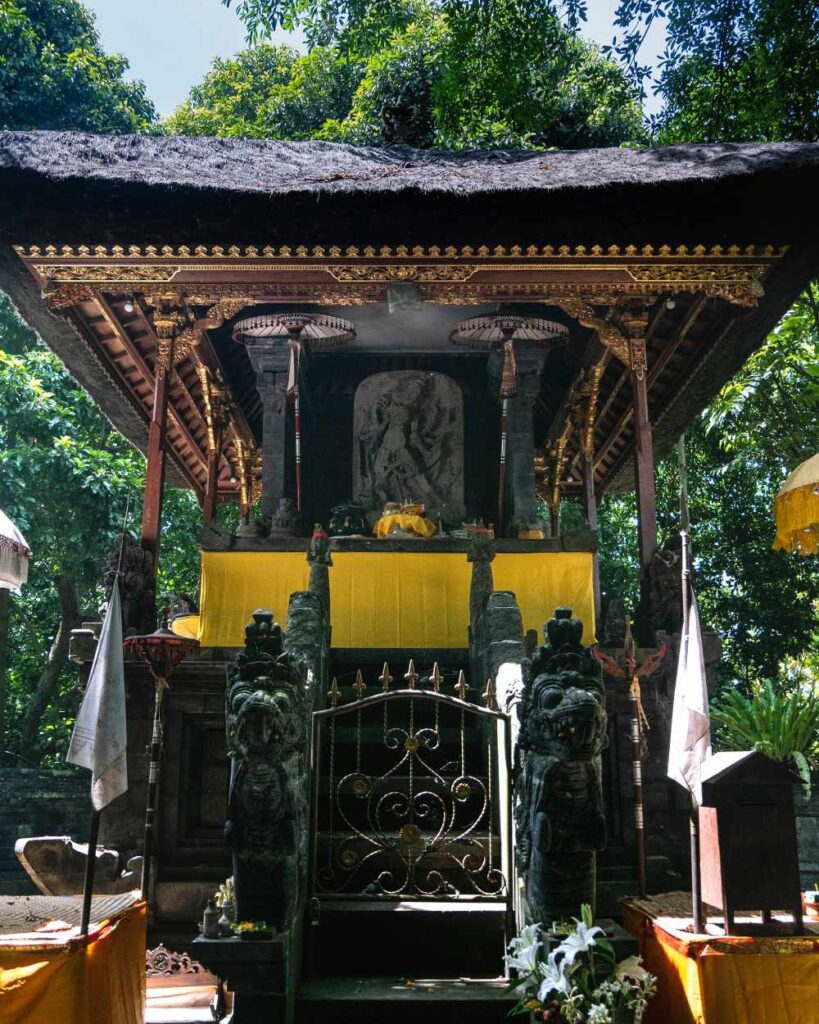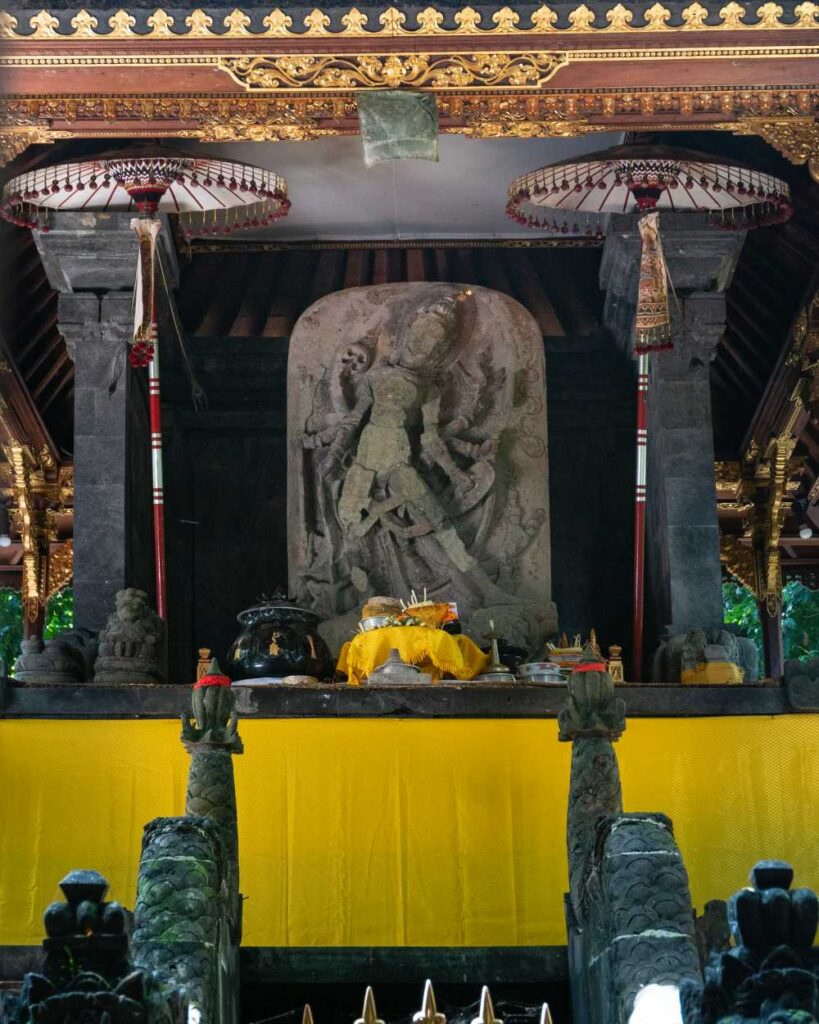
Deep in the regency of Gianyar, a temple stands quietly on the side of the busying main road. An expansive parking lot hides the beautiful mysteries found beyond: a temple dedicated to Durga, ‘The Goddess of Death’, with a statue of the deity enshrined inside.
Pura Kahyangan Jagat Bukit Dharma Durga Kutri is a lesser-known temple. It’s ordinary façade doesn’t represent the more mystic atmosphere inside, past the initial paduraksa entrance gates. An atmosphere to match this deity’s own feared reputation.
This temple, like all Balinese temples, has three distinct areas, each with its own function. In the third, or ‘inner’ courtyard, known as the jeroan, one will find the numerous shrines where worshippers will come to lay their offerings and pray. Unique to this temple, one will find the stone statues of Amoghapasa, Ganesha, Bhatara and Buddha in the area.


Normally, the jeroan is the end of a temple, but not so at Pura Kahyangan Jagat Bukit Dharma Durga Kutri — also known as Pura Bukit Dharma Kutri.
From the jeroan, there is a long flight of stairs, guarded by two statues, that leads up into the darkness of the forest. At the top, nature has created its own entrance gate, as the vines of an ancient banyan tree have rooted themselves on either side, welcoming you to a rugged clifftop weathered by the elements. This is only the first level, where you’ll find shrines and pathways cut between the rock, including a hidden grotto.
A final flight of stairs takes you to giant doorway, the bulging eyes of Boma peer down sinisterly from above. The door is kept closed and locked, as if to keep the sanctity of the object inside.


Inside there is a small courtyard and at its centre a raised pavilion that houses a large stone slab depicting Durga, surrounded by tedung umbrellas and the smoke of the leftover incense.
It’s rare to find a temple dedicated to ‘Betari Durga’, who is widely known in Bali as the terrifying ‘Goddess of Death’ and resides in the Pura Dalem (temples near graveyards). Though her story is not quite as simple as that.
She is the destructive manifestation of Uma, Siva’s consort, able to command the bhuta kala (demons) and thus destroy life. Her presence is central to Balinese witchcraft, or pengleakan; the bloodcurdling ‘leyaks’ are said to worship in graveyards, asking her for power. Of course her association with the wicked Rangda character – from the Calon Arang story and performance – only solidifies Durga’s hellish depiction.

But as always in Bali, there are two sides to everything – including the so-called Goddess of Death. In this statue in Bukit Dharma, Durga is represented in the role of Mahisasuramardini, a strong eight-armed warrior, weapons in each hand, a defeater of evil (she was the slayer of the bull-demon Mahisasura). In this form, she is worshipped for her power, yes, but as a protector and a life giver: “Infertile couples go in hope of conception, and the very ill in hope of cure. The same acts that kill also bring lite. Destruction and life giving are not exclusive opposites but inclusive complements of one another.” (Geertz, 1994).
Her name, Durga, is Sanskrit for “inaccessible / stronghold / powerful”. Through time this has been received as a power to harness (such as the black magic of leyaks), or as a power to worship and ask for blessings (Durga as Mahisasuramardini). Two sides of the same coin.










